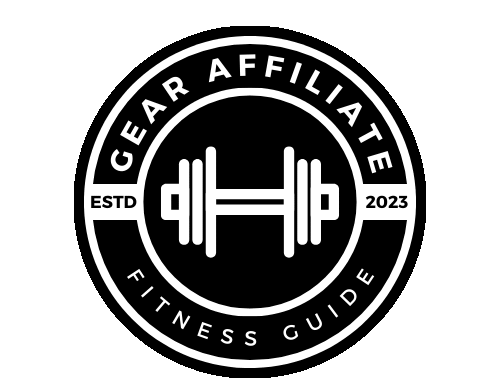
Introduction to Bicep Anatomy
The biceps brachii, commonly known as the biceps, play a crucial role in the overall aesthetics and functionality of the arms. This muscle group is primarily composed of two heads: the long head and the short head. Understanding the differentiation between these two components is essential for effective training and achieving maximum gains. The long head of the biceps runs along the outer part of the arm, while the short head is located on the inner side, contributing to the overall shape and size of the biceps.
Both heads have unique functions, and they work together to facilitate various arm movements, including elbow flexion and forearm supination. Therefore, targeting both the long and short heads during workouts is vital for balanced bicep development. Neglecting one muscle group can lead to imbalances that may hinder overall strength and promote the risk of injuries.
Furthermore, incorporating exercises that focus on both heads allows for more comprehensive muscle development. For instance, certain exercises emphasize the long head, leading to greater visual prominence, while others activate the short head, contributing to fullness in the overall bicep appearance. Consequently, adopting a well-rounded training regimen ensures that both muscle groups receive adequate stimulation.
This blog post will explore six effective exercises that can aid in maximizing bicep gains. Knowing the anatomy of the biceps will provide valuable insights into the mechanics of these exercises and their respective benefits. By targeting the specific muscle groups within the biceps, individuals can enhance their strength and muscle mass effectively, paving the way for superior arm performance and aesthetics.
Top 6 Bicep Exercises
Building strong biceps is a common goal for many fitness enthusiasts. To achieve maximum gains, it’s essential to incorporate effective exercises that target the bicep muscles. Below are the top six bicep exercises, along with a detailed description of each, including their benefits and execution form.
1. Barbell Curl: The barbell curl is a classic bicep-building exercise that primarily targets the biceps brachii. To perform this exercise, stand with your feet shoulder-width apart while holding a barbell with an underhand grip. Curl the barbell towards your chest while keeping your elbows stationary. Common mistakes include using excessive weight and allowing the elbows to flare out. Aim for three sets of 8-12 reps.
2. Dumbbell Hammer Curl: This variation emphasizes the brachialis and brachioradialis muscles. Hold a dumbbell in each hand with your arms at your sides. Curl the weights while keeping your palms facing each other throughout the movement. This prevents shoulder strain and promotes balanced muscle development. Perform three sets of 10-15 reps.
3. Preacher Curl: The preacher curl helps isolate the biceps for enhanced growth. Sit at a preacher curl bench and rest your arms on the padded surface. Using an EZ curl bar or dumbbells, curl the weight towards your shoulders. Avoid swinging your body, which can reduce the effectiveness of the workout. Aim for three sets of 8-12 reps.
4. Concentration Curl: This exercise isolates one arm at a time, promoting greater muscle engagement. Sit down and rest your elbow on the inside of your thigh as you curl the dumbbell towards your shoulder. Focus on a slow and controlled movement. Complete three sets of 10-12 reps per arm.
5. Incline Dumbbell Curl: Performing curls on an incline bench stretches the biceps for a more effective workout. Sit back at a 45-degree angle while holding dumbbells and curl them towards your shoulders. Maintain your elbows close to your body. Aim for three sets of 8-10 reps.
6. Cable Bicep Curl: Using a cable machine provides constant tension on the biceps. Stand facing the cable machine, grab the handle with an underhand grip, and curl it towards your shoulders. Ensure that your movements are controlled to maximize effectiveness. Perform three sets of 12-15 reps.
Incorporating these six bicep exercises into your workout routine is a practical approach to achieving substantial arm strength and definition. Each exercise offers unique benefits, ensuring that your training remains diverse and effective.
Creating an Effective Bicep Workout Routine
To achieve maximum gains from your bicep exercises, it is essential to construct a well-structured workout routine that optimally incorporates the six recommended bicep exercises. When formulating this routine, it is important to consider several principles, including sets, repetitions, and rest periods. An effective approach might consist of three to four sets of each exercise, with repetitions ranging from 8 to 12 to promote hypertrophy, which is crucial for muscle growth. This approach ensures that your biceps are adequately stimulated while allowing enough volume to promote strength improvements over time.
Incorporating varying rest periods between sets will also play a critical role in your training efficacy. Generally, a rest period of 30 to 90 seconds is adequate for hypertrophy-focused workouts, allowing the muscles to recover sufficiently while maintaining the intensity needed for growth. As you progress, observing your body’s response and adjusting rest times or volume may enhance your performance and bicep development.
It is advantageous to integrate these bicep exercises into a broader upper body or arm workout routine, which allows for balanced muscle development. For example, pairing bicep exercises with tricep and shoulder movements can help maintain muscular symmetry and overall arm strength. Consider specific sequencing, such as starting with compound lifts for larger muscle groups before progressing to isolation exercises that focus directly on the biceps.
To ensure continuous improvement and optimal gains, regularly assess your bicep workout. Incrementally increasing weights, modifying sets and repetitions, or incorporating advanced techniques such as drop sets or supersets can enhance muscle adaptation. Ultimately, a well-organized routine that balances effort and recovery will lead to significant progress in bicep strength and size over time.
Safety Tips and Common Mistakes to Avoid
Engaging in bicep exercises can lead to significant muscle growth and strength improvements. However, prioritizing safety while working out is essential to prevent injuries and maintain proper technique. One of the foremost safety tips is to begin every workout with a thorough warm-up. This routine can include light cardiovascular exercises and dynamic stretching to prepare the muscles, joints, and connective tissue for strenuous activity. Additionally, cooling down after workouts with static stretching can alleviate muscle soreness and enhance flexibility.
Listening to your body is crucial as well. If you experience pain during a bicep exercise, it may indicate improper form or excessive weight. In such cases, it is imperative to stop and reassess your technique or the weight being lifted. Proper form can vastly improve safety and effectiveness, as poor posture not only diminishes muscle engagement but can also lead to strains or overuse injuries. Ensure your elbows remain close to your body during curls, and avoid using momentum to lift weights, as this can lead to ineffective workouts and potential harm.
Common mistakes during bicep workouts should be addressed to optimize performance. One prevalent issue is lifting weights that are too heavy, which can compromise form and initiate injury. Gradually increasing weight as strength improves is advisable. Another mistake is neglecting the eccentric phase of the repetition, which involves lowering the weight. Focusing on this phase can yield greater muscle gains. Avoiding these mistakes, maintaining a balanced routine, and incorporating rest days into your schedule can significantly enhance your overall results in bicep training.
If you found this post to be helpful, then you may be interested in the rest of our blog page here.
At Gear Affiliate, we always want to give our readers more resources to research. Below are a few sources that we have found to be helpful relating to this topic.


